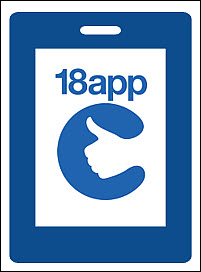After eight years, Italy’s culture voucher for 18-year-old citizens is becoming two programs, one based on need, one on academics.
Two Cards: One Based on Need, One on Academics
This year marks the debut in Italy of two new measures replacing the 18App. The two programs are the Carta Cultura Giovani (Youth Culture Card) and the Carta del Merito (Merit Card).
Having been active for eight years, Italy’s 18App was the first such “culture voucher” introduced in Europe, and has served to prompt similar cultural-development measures for teens and young adults in other markets including France, Spain, and, most recently, Germany.
The effects of these efforts in some cases have been dramatic in terms of book sales trends and reading in Italy: Between 2016 when the 18App was introduced and 2019, the percentage of Italians aged 18 to 21 who reported that they were reading rose from 46.8 percent to 54 percent.
Some observers believe that abandoning the measure this year cannot fail to have repercussions on the cultural industries in general and on the publishing industry in particular, publishing having been the main beneficiary of the 18App. Some 70 percent of the measure’s value was spent on books, and as recently as last year, the value each new 18-year-old received from the 18App was €500 (US$538).
It’s worth highlighting the changes introduced by the two new vouchers in comparison to the previous format.
The 18app was intended to be a universalist means of access to culture, aimed at any young person who had turned 18 during the previous year and was resident in Italy, or in possession of a residence permit.
The Carta Cultura has a different structure: The philosophy behind this measure is that the barrier preventing young people from accessing culture—and which this public intervention is intended to remove—is mainly economic. The card is in fact aimed at young people with a comparatively low “ISEE,” a metric of one’s economic situation that takes into account a family’s income, assets, and several household characteristics. The ISEE is not a tax return (which is personal) but refers precisely to the overall economic situation of a new 18-year-old’s family. A household ISEE of less than €35,000 (US$37,681) is makes an 18-year-old eligible for the Carta Cultura.
The Carta del Merito establishes a reward mechanism aimed at those who have obtained the highest marks in their last year of high school, 100 or 100 with honors. How many people are we talking about? If we take data from the ministry of education and merit, in 2023 there were about 50,000 Italian high-school graduates, 10 percent of the total, at such a level. This is an average, however, that doesn’t take into account some strong territorial and school system discrepancies in Italy.
Both vouchers have an amount of €500 and both can be awarded to a single student who demonstrates both the required economic and school-performance levels. But it’s not easy to make assumptions about how many 18-year-olds may qualify for both cards. And while it’s unlikely that there will be many recipients of both cards, a person entitled to both is to receive them in different years.
For further reading: Bruno Giancarli, publishingperspectives.italy
